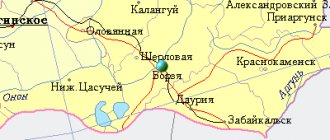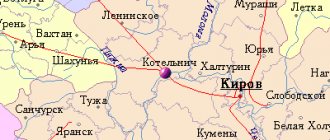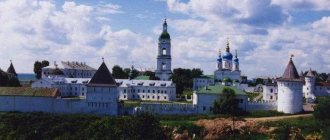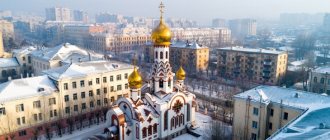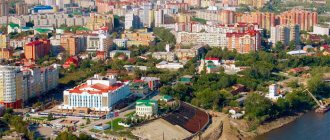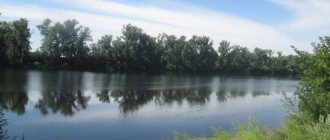Alzamay is a city in the Irkutsk region of Russia. It forms the Alzamay municipality as part of the Nizhneudinsky district (since 2006).
Founded in 1897.
City since 1955.
Population: 5,749 people (2020).
The area of the municipality is 47 km2, the city proper is about 6 km2 (0.6 thousand hectares).
Telephone code: 39517.
Postal code: 665160.
OKATO code: 25424505.
OKTMO code: 25628105001.
Katoykonym: Alzamaytsy.
The head of the municipality is Alexander Viktorovich Lebedev.
Of all 22 cities in the Irkutsk region, Alzamay is the smallest in terms of population, economic potential and area.
Story
It arose as a village at the Alzamay station of the Trans-Siberian Railway (the station opened in 1899). The name arose from the neighboring village of Alzamay (now Old Alzamay) on the Alzamaychik River.
In 1901, a water pump and a water tower were erected in the station village. In 1907, an Orthodox church in the name of St. Nicholas was built and consecrated. During the Civil War, about 200 people lived in the village of Alzamay. In the 1920s, a locomotive depot, the Alzamaisky station of the Nizhneudinsky LTH, and the chemical forestry of the Vostsibkhimleszag trust were opened. During the Great Patriotic War, the Dnepropetrovsk Switch Factory, which produced switches needed by the railway for transporting goods to the front, was evacuated to the village.
In 1943, Alzamay was given the status of a workers' village.
In May 1955, the village of Alzamay, which by that time had 14 thousand inhabitants, was transformed into a city of regional subordination.
From 1945 to 1959, the village, and then the city, was the center of the Alzamaysky district of the Irkutsk region.
Until 2005 it was part of the municipal formation “City of Nizhneudinsk”.
Read on Irkipedia:
- Alzamay // Historical Encyclopedia of Siberia (2009);
- Alzamay // Great Soviet Encyclopedia, 3rd ed. (1969-78);
- Old Alzamay.
Alzamay. History and sights
Alzamay is a city (since 1955) in the Nizhneudinsky district of the Irkutsk region of Russia. Until 2005, it was part of the municipal formation "City of Nizhneudinsk", since 2006 it forms the Alzamay municipal formation. Alzamay is located 92 kilometers on the border of Nizhneudinsky and Taishetsky districts. It received city status in 1955, but the year of foundation of Alzamaya is considered to be 1887, when official research began on laying the future railway route.
History of the city The history of the city of Alzamay begins with the history of the village of Old Alzamay. The construction of the Moscow Highway caused the emergence of many settlements along it. So in 1750, the settlement of Alzamay arose on the created tract. This name is associated with the name of one of the outstanding leaders of the Khongodorov clan - Alzobe, Olzona, Olzom - Alzamay.
In the territory surrounding the city at the beginning of the 15th century there was a settlement of Buryats - cattle breeders. In one of the uluses there lived a family in which the beautiful daughter Alzama grew up. The ulus was named in her honor, and from here (probably) came the name of the village (yama) Alzamay, which passed on to the name of the railway station. It was not possible to find an exact translation from the Buryat language into Russian. But we managed to find out that the proper name Olzobe means a successful trophy in a hunt, prey, “zama” - road, path. Thus, we can assume that Alzamay is a Russified toponym with Buryat roots, meaning the road to places with successful hunting.
In the 18th-19th centuries. Rich merchants lived in the village of Old Alzamay. There was a big store. At the end of the 19th century, they tried to look for buyers for their goods along the Moscow Highway. By that time, a single-track railway had already passed through the territory of the future Alzamay. People began to flock to the future Trans-Siberian Railway, so the population grew rapidly. The first settler from Old Alzamay was Innokenty Kolesov and his family. Then others began to move in as well. At first there were 17 houses. We settled in the area of the future station. The exact date of commissioning of the Alzamay station could not be determined in the archives of Irkutsk. According to F.V. Golubev to the commission for the restoration of voting rights; in 1882 he lived in the village. Alzamay and began working in the party to explore the railway route from Taishet to Nizhneudinsk. Officially, research on laying the route began later, on June 15, 1887. It was this year that F.V. Golubev joins the staff, works and lives at the station. Alzamay. Apparently, 1887 should be considered the year of foundation of Alzamay.
In 1897, the first train arrived from Nizhneudinsk. This event probably occurred in the second half of summer, since the rails were laid in 1897 from Krasnoyarsk to the 838th verst, and the first train to Nizhneudinsk arrived in September 1897. The first railway workers appeared and settled along the railway and the Moscow highway. In 1901, a water pump and a water tower were erected to supply steam locomotives with water. The water tower was built next to the station, 22 m high, with a tank with a capacity of 210 m3 of water. Water was pumped into the tower tank by two locomotives directly from the Toporok River. There were many swamps on the territory of Alzamay, so visitors began to settle in places on the other side of the railway track. The population began to increase, there were already about 50 households. Trade began to develop. Many rich people had their own shops. A mill of the Latvian Erop family appeared on the banks of the Toporka in the area of Melnichnaya Mountain. Villagers came here to grind grain.
On the site of the existing park with larch trees near the station, a small church was built in the name of St. Nicholas. It all started with the fact that the station manager I.A. The con commissioned an icon of St. Nicholas for the believers of the village and ordered it to be installed in the passenger building of the station. Road master A.K. Shashkevich built a decent icon case. Thus, services began to be performed in front of the icon. And yet, the church was needed. Its construction began at the end of 1905 at the expense of railway employees with the energetic participation of the station manager I.A. Kona. The church was one-story and painted with oil paint. Contemporaries noted that the church building was built in the Gothic style. By the way, many of the station churches built in those years were like this. On June 29, 1907, the church was consecrated in the name of St. Nicholas and assigned to the parish of the Innocent Church in the village of Alzamay.
By the beginning of the Civil War, 174 residents lived around the Alzamay station. The troops of Kolchak, Czechs, and Romanians were spread out throughout Siberia. Punitive detachments scoured the villages. Many residents of Alzamay joined the partisan detachment. The chairman of the detachment was Arkhip Mikhailovich Blinov, telegraph operator and liaison V.T. Burmakin, K.E. Gerasimov. The partisans were helped by village residents and children. One of them is A.P.Yanopolets. The Alzamayans have preserved and protected the graves of two partisan scouts captured by the White Guards and hanged on a birch tree. These are relatives: I. Balyberdin (30 years old) and his nephew A. Ivantsov (18 years old). In 1922, the territory of the village council with the center - Alzamay station - became part of the Irkutsk province, East Siberian Territory. Vasily Yakovlevich Smorodin was appointed the first chairman of the Alzamaysky village council, and the first chairman of the Alzamaysky volost council of workers' deputies G.I. Balakshin. With the establishment of Soviet power, shops and a locomotive depot began to be built; for the production of sleepers, the Alzamaysky point of the Nizhneudinsky LTH was organized in 1925; in 1927, the chemical forestry enterprise (later KHLH) of the Vostsibkhimleszag trust was organized; in 1932, a seven-year school appeared.
In 1937, Alzamay again became part of the Irkutsk region. Approximately before the settlement was given the status of a “working village,” the Alzamay station was territorially part of the Alzamay village council with its center in the village of Alzamay. During the Great Patriotic War, Siberia played a significant role. Siberian brigades went to the front fully equipped. 15 enterprises were evacuated to the Irkutsk region. In 1942, the Dnepropetrovsk Switch Factory was transferred to Alzamay, which produced switches so necessary for the railway for transporting goods to the front. Now it is a mechanical repair plant.
Hundreds of residents left Alzamay for the front. 82 Alzamayans laid their heads on the altar of Victory. Their names are carved on the monument to fellow countrymen who fell in the Great Patriotic War. However, despite all the difficulties of wartime, the settlement called Alzamay continued to grow. In connection with the evacuation of the switch factory and the creation of a timber industry base, the number of industrial enterprises is increasing, social infrastructure and administrative functions are expanding. The settlement that formed around the station was given the status of a “workers’ village” on March 5, 1943. Probably, from that time on, the population of the Alzamay station increased sharply and exceeded that in the village of Alzamay, from which the outflow of population continued. The village council is moved from the village to the working settlement of Alzamay. Until 1945, the working village of Alzamay was part of the Nizhneudinsky district. By the Decree of the Presidium of the Supreme Soviet of the RSFSR dated February 7, 1945, the Alzamaysky district with its center in the village of Alzamay was formed from the territory of the village councils of the Nizhneudinsky district: Alzamaysky, Baravinoki, Katarminsky and the city of Alzamay; Taishet district: Kaltashi council.
The Alzamaysky district bordered on the Taishetsky district in the west, the Tanguysky district in the southeast, the Bratsky and Shitkinsky districts in the north, and the Nizhneudinsky districts in the south. The area of the Alzamaysky district was 12.5 thousand square meters. km, which mainly contained forests and a relatively small part of agricultural land. At this time, the regional editorial office of the newspaper “On the Lenin Way” was located in the city. In 1945, a hydrological post was opened. The city library opened in the same year. On September 15, 1947, an Order was adopted by the Irkuttransles trust on the reorganization of the Porog forest farm and the organization of the Alzamay private farm; in the same year the forestry enterprise was organized.
In the 50s it expanded due to the development of industrial enterprises, the emergence of new ones and, accordingly, a network of socio-cultural institutions, and at the same time the population increased. In 1953, large construction began in Alzamay. A new locomotive depot was being built. Residential apartment buildings and a holiday home began to be built near the station. The construction was carried out by military personnel. The communications department began its work. Veterans remember how they built it with their own hands, how they felled the wood, transported it themselves, laid the bricks themselves, made the foundation, covered the roof. Witnesses and participants in these events are Vera Ivanovna Kulikova, Ivan Egorovich Shabaev. Alzamay grew, 13.5 thousand people already lived here. Therefore, in 1954, the Alzamaysky executive committee of the regional Council of Workers' Deputies filed a petition with the Irkutsk regional executive committee to transform the workers' village of Alzamay into a city. And in May 1955, part of the territory of the Alzamaysky district entered the Nizhneudinsky district, and the district village of Alzamay (14 thousand inhabitants) became a city of regional subordination.
The favorable geographical location and the availability of forest resources determined its production profile and growth as a city with inherent infrastructure. Alzamay began to be considered a city of foresters and forestry. His whole life was connected with the timber industry. The repair and mechanical plant restored logging equipment, in the Prisayan taiga the Alzamaysky timber industry enterprise of the Taishetles production association (now a private enterprise), the timber industry enterprise of the Vostsibkhimleszag trust, and the Irkutsk timber industry enterprise of the Uzbekles combine carried out logging. Timber, timber, and resin were exported far beyond the boundaries of the city, region, and even the country. The future of the city was linked to the further development of the industry. Today, forestry is mainly carried out by private entrepreneurs.
On October 9, 2005, the first elections of the Head of the city and deputies of the first City Duma were held. Lebedev Alexander Viktorovich was elected head of the urban settlement. The Chairman of the City Duma is Victoria Feliksovna Chugunova. Deputies: Potapov S.A., Sorokina A.E., Vinnik E.A., Gaponko N.N., Bondar V.N., Drobyshev S.A., Morzhenakova L.F., Kostenko T.Yu., Romanov A. A. Since January 2006, Alzamay has been the Alzamay municipality and is part of the Nizhneudinsky district. On March 1, 2007, the decision of the Duma of the Alzamay municipal formation was issued “On approval of the Regulations on the coat of arms of the Alzamay municipal formation” on the basis of the Federal Law of October 6, 2003 No. 131-FZ “On the general principles of the organization of local self-government in the Russian Federation” and in accordance with the Charter Alzamay municipality. In the “Bulletin of the Alzamay Municipal Formation” dated March 23, 2007, the Regulations on the coat of arms of the Alzamay Municipal Formation, approved by the decision of the Duma, were published, with an image of the coat of arms and a heraldic description.
Today, schools and hospitals are open in Alzamay. The mechanical repair plant, the forestry enterprise, and the railway operate uninterruptedly. There is a cultural and sports complex, a cinema "Sibiryak", a House of Children's Creativity, a music school. Private entrepreneurs build and open shops, pharmacies, cafes, and salons. The city is gradually acquiring a modern face.
Relief and climate
Relief. The settlement of Alzamay is located in the valley of the small winding river Toiorok (the right tributary of the Biryusa) at an altitude of about 300 m above sea level. Its surroundings are a forested area with areas suitable for agricultural activities (most of them were developed during the period of the Stolypin agrarian reform). To the west and east of Alzamay, the hilly uplands of the watersheds of the Biryusa and Uda rivers begin. The spurs of the Eastern Sayan are visible in the southwest.
Climate. The long-term average duration of the frost-free period in Alzamay is 91 days. The first frosts are recorded on September 6, the last - on June 5.
The average monthly temperature in January is -20.6″C (absolute -51 °C, July + 18.4 °C (absolute +38 °C). The average annual temperature is -1.2 °C.
The average annual precipitation amount is 473 mm, of which 53% falls in May - August.
The appearance of the settlement
Alzamay is almost entirely one-story. There are several three- and five-story buildings in the city center. On its outskirts you can find log huts built at the beginning of the last century. Outside the city, the outlines of the buildings of a bankrupt silicate materials plant are visible. Only a few buildings are equipped with running water, sewerage and central heating. There is no centralized hot water supply.
During the crisis of the 1990s, the town became dilapidated, and people's faith in a better future was shaken. Now the situation is changing. Alzamay is gradually coming to life. Through the joint efforts of the population, the administration of the municipality and enterprises, its improvement is being carried out: the streets are becoming cleaner, lamps are being installed, monuments to those who died at the fronts have been put in order, a church is being built, landscaping is being done, and sports grounds are being organized.
Alzamay's compactness and remoteness from regional and district centers give it a special provincial flavor. Those coming from larger cities get the impression that time has stood still here. An unusual calm reigns everywhere. And only trains rushing along the Trans-Siberian Railway and television remind us that life is in full swing somewhere. The town is charming in its own way. In summer there is a riot of greenery and flowers, and in winter there is a lot of snow and real Siberian frost. Wonderful people live here who can understand and help in difficult times.
Economy of Alzamay
The main branch of the city's economy was the maintenance of the railway, thanks to which the city arose. The repair and mechanical plant in Alzamay is engaged in the production of non-standard railway equipment, as well as the production of trolleys for laying rail loops, equipment for transporting sleepers and the production of boiler equipment made of cast iron. Forestry has become an equally important sector of the economy. The Alzamaysky forestry enterprise conducts logging in the area; the wood processing industry in the city is undeveloped, so raw materials from the city are sent by rail to other enterprises.
Until recently, a silicate plant operated in the area, specializing in the production of sand-lime bricks and some other materials for construction. Today the plant, like some other enterprises in the city, is closed, which cannot but indicate economic decline. Many of the city’s economic sectors are promoted by private entrepreneurs; for example, the city’s agriculture is almost entirely represented by private farms. Also near the city, a deposit of quartz molding sand and gravel-sand mixture is being developed.
Alzamay became known to many for the phantasmagoric work of the famous Soviet and Russian science fiction writer Vladimir Vasiliev, who described in the novel “Wolf Nature” the events allegedly taking place in the city. The city is also known for being the smallest settlement in the Irkutsk region in terms of area, population and economic indicators.
Sights of Alzamay
In the center of the city there is a monument to the soldiers who died in the Great Patriotic War of 1941–1945.
The old water tower and the construction of the water pump itself are an example of an ancient engineering structure and date back to 1901. The height of the tower is 22 meters, and the water volume of the reservoir is 210 cubic meters. Near the railway station, in the park, a church was built. Construction began in 1905 with donations from railway workers and was completed in 1907. On Chernyaev Street, there is the Church of the Intercession of the Blessed Virgin Mary.
The deceased WWII hero Viktor Vasilievich Chernyaev is from Alzamay. The city school is named after Maria Gabelkova, who died heroically in the war, blowing herself up along with an ammunition depot. Natives of Alzamay took part in the victory parade on Red Square - these are Farakh Sultanovich Akhmetov and Nikolai Filatovich Brankov. In memory of the fallen heroes - fellow countrymen, there is a stele in the city on which the names of 82 victims are carved.
Geography
The city is located in the Eastern Sayan, in the valley of the small winding river Toporok (the right tributary of the Biryusa) at an altitude of about 300 m above sea level, 598 km northwest of Irkutsk, 75 km from Nizhneudinsk.
See in Irkipedia : Topographic map of square N-47-A (Alzamay, Taishet, Biryusa River)
Excerpt characterizing Alzamay
The source of this extraordinary power of insight into the meaning of occurring phenomena lay in the national feeling that he carried within himself in all its purity and strength. Only the recognition of this feeling in him made the people, in such strange ways, from the disgrace of an old man, choose him against the will of the tsar as representatives of the people's war. And only this feeling brought him to that highest human height from which he, the commander-in-chief, directed all his strength not to kill and exterminate people, but to save and take pity on them. This simple, modest and therefore truly majestic figure could not fit into that deceitful form of a European hero, ostensibly controlling people, which history had invented. For a lackey there cannot be a great person, because the lackey has his own concept of greatness. November 5 was the first day of the so-called Krasnensky battle. Before the evening, when after many disputes and mistakes of generals who went to the wrong place; after sending out adjutants with counter-orders, when it became clear that the enemy was fleeing everywhere and there could not be and would not be a battle, Kutuzov left Krasnoye and went to Dobroye, where the main apartment had been transferred that day. The day was clear and frosty. Kutuzov, with a huge retinue of generals dissatisfied with him and whispering behind him, rode to Dobroy on his fat white horse. Along the entire road, groups of French prisoners taken that day (seven thousand of them were taken that day) crowded around the fires, warming up. Not far from Dobroye, a huge crowd of ragged, bandaged and wrapped prisoners was buzzing with conversation, standing on the road next to a long row of unharnessed French guns. As the commander-in-chief approached, the conversation fell silent, and all eyes stared at Kutuzov, who, in his white cap with a red band and a cotton overcoat, sitting hunched over his stooped shoulders, was slowly moving along the road. One of the generals reported to Kutuzov where the guns and prisoners were taken. Kutuzov seemed preoccupied with something and did not hear the general’s words. He squinted his eyes with displeasure and peered carefully and intently at those figures of the prisoners who presented a particularly pitiful appearance. Most of the faces of the French soldiers were disfigured by frostbitten noses and cheeks, and almost all had red, swollen and festering eyes. One group of Frenchmen stood close by the road, and two soldiers - the face of one of them was covered with sores - was tearing a piece of raw meat with their hands. There was something scary and animalistic in that quick glance that they cast at those passing by, and in that angry expression with which the soldier with the sores, looking at Kutuzov, immediately turned away and continued his work. Kutuzov looked at these two soldiers carefully for a long time; Wrinkling his face even more, he narrowed his eyes and shook his head thoughtfully. In another place, he noticed a Russian soldier, who, laughing and patting the Frenchman on the shoulder, said something affectionately to him. Kutuzov shook his head again with the same expression. - What are you saying? What? - he asked the general, who continued to report and drew the commander-in-chief’s attention to the captured French banners that stood in front of the front of the Preobrazhensky regiment. - Ah, banners! - said Kutuzov, apparently having difficulty tearing himself away from the subject that occupied his thoughts. He looked around absently. Thousands of eyes from all sides, waiting for his word, looked at him. He stopped in front of the Preobrazhensky Regiment, sighed heavily and closed his eyes. Someone from the retinue waved for the soldiers holding the banners to come up and place their flag poles around the commander-in-chief. Kutuzov was silent for a few seconds and, apparently reluctantly, obeying the necessity of his position, raised his head and began to speak. Crowds of officers surrounded him. He looked carefully around the circle of officers, recognizing some of them. – Thank you everyone! - he said, turning to the soldiers and again to the officers. In the silence that reigned around him, his slowly spoken words were clearly audible. “I thank everyone for their difficult and faithful service.” The victory is complete, and Russia will not forget you. Glory to you forever! “He paused, looking around. “Bend him down, bend his head,” he said to the soldier who was holding the French eagle and accidentally lowered it in front of the banner of the Preobrazhensky soldiers. - Lower, lower, that’s it. Hooray! “Guys,” with a quick movement of his chin, turn to the soldiers, he said. - Hurray rah rah! - thousands of voices roared. While the soldiers were shouting, Kutuzov, bending over the saddle, bowed his head, and his eye lit up with a gentle, as if mocking, shine. “That’s it, brothers,” he said when the voices fell silent... And suddenly his voice and expression changed: the commander-in-chief stopped speaking, and a simple, old man spoke, obviously wanting to tell his comrades the very thing he needed now. There was a movement in the crowd of officers and in the ranks of soldiers to hear more clearly what he would say now. - Here's what, brothers. I know it’s difficult for you, but what can you do? Be patient; not long left. Let's see the guests out and then rest. The king will not forget you for your service. It’s difficult for you, but you’re still at home; and they - see what they have come to,” he said, pointing to the prisoners. - Worse than the last beggars. While they were strong, we did not feel sorry for ourselves, but now we can feel sorry for them. They are people too. Right, guys?
Transport accessibility
The Trans-Siberian Railway and the federal highway P258 “Baikal” (Novosibirsk-Irkutsk) pass through Alzamay. Since the construction of the Trans-Siberian Railway, a railway station has been operating in Alzamay. In addition, Alzamay is connected by a dirt road to the village of Chunsky (the administrative center of the Chunsky district). The road network in Alzamay municipality is 120 km.
Distance from Alzamay to some cities, km
| City | Distance | |
| by railway | by road | |
| Alzamay | — | — |
| Taishet | 71 | 67 |
| Nizhneudinsk | 92 | 90 |
| Tulun | 209 | 213 |
| Vikhorevka | 340 | 417 |
| Winter | 348 | 346 |
| Bratsk | 364* | 438 |
| Cheremkhovo | 468 | 463 |
| Krasnoyarsk | 489 | 436 |
| Usolye-Sibirskoye | 531 | 536 |
| Angarsk | 559 | 567 |
| Irkutsk | 598 | 611 |
| Zheleznogorsk-Ilimsky | 626 | 699 |
| Ust-Kut | 794** | 807 |
| Ust-Ilimsk | 861 | 698 |
| Ulan-Ude | 1054 | 1061 |
*To Anzebi station.
**To Lena station.
Map
Alzamay: photo from space (Google Maps) Alzamay: photo from space (Microsoft Virtual Earth)
| Alzamay. Nearest cities. Distances in km. on the map (in brackets along roads) + direction. Using the hyperlink in the distance , you can get the route (information courtesy of the AutoTransInfo website) | |||
| 1 | Taishet | 58 (67) | NW |
| 2 | Biryusinsk | 69 (76) | NW |
| 3 | Nizhneudinsk | 75 (90) | YU |
| 4 | Lesogorsk | 77 () | NE |
| 5 | Yurts | 84 (98) | NW |
| 6 | Chunsky | 85 (188) | NE |
| 7 | Lower Poima (Krasnoyarsk Territory) | 113 (128) | NW |
| 8 | Nizhny Ingash (Krasnoyarsk region) | 151 (178) | NW |
| 9 | Tulun | 163 (213) | SE |
| 10 | Vikhorevka | 168 (468) | IN |
| 11 | Ilansky | 179 (206) | NW |
| 12 | Bratsk | 196 (438) | IN |
| 13 | Kansk | 198 (228) | Z |
| 14 | Irbeyskoye (Krasnoyarsk region) | 202 (318) | Z |
a brief description of
The city is located in Eastern Sayan, on the river. Toporok (Angara basin). Railway station on the Trans-Siberian Railway.
Territory (sq. km): 47
Information about the city of Alzamay on the Russian Wikipedia site
Historical sketch
It arose as a village at the Alzamay station (opened in 1899); name after the neighboring village of Alzamay (now Old Alzamay) on the river. Alzamaychik. The primary one, apparently, is the hydronym in the form Alzamay. Its Buoyat form, Olzom, is presumably associated with the name of Olzobe, the legendary leader of the Buryat people, who led in the 17th century. its migration from Mongolia to the Baikal region.
Workers' village of Alzamay since 1943. City since 1955.
Economy
Woodworking plant, mechanical repair plant and other enterprises.
In the Alzamay area there is logging.
| Population by year (thousands of inhabitants) | |||||||
| 1959 | 13.1 | 2000 | 8.7 | 2010 | 7.1 | 2017 | 6.0 |
| 1970 | 10.6 | 2001 | 8.7 | 2011 | 6.7 | 2018 | 5.9 |
| 1979 | 9.3 | 2003 | 7.4 | 2012 | 6.6 | 2019 | 5.8 |
| 1989 | 9.0 | 2005 | 7.3 | 2013 | 6.5 | 2020 | 5.7 |
| 1992 | 9.1 | 2006 | 7.2 | 2014 | 6.3 | 2021 | 5.7 |
| 1996 | 9.0 | 2007 | 7.2 | 2015 | 6.2 | ||
| 1998 | 8.8 | 2008 | 7.1 | 2016 | 6.1 | ||
City infrastructure
Streets
1st Podgornaya, 2nd Zarechnaya, 2nd Linenaya, 2nd Lugovaya, 2nd Podgornaya, 2nd Rechnaya, 3rd Podgornaya, 4th Podgornaya, 40 years of Victory, 4584 km, Altai, Apashetskaya . . , Sennaya, Sibirskaya, Sidorenko, Sovetskaya, Sovkhoznaya, Solnechnaya, Sosnovaya, Stepnaya, Greenhouse, Toporochnaya, Traktovaya, Chernyaeva, Shkolnaya, Yubileynaya, Yuzhnaya.
Lanes
Bazarny, Birch, Bolotny, Zagotzerno, Ring, Terminal, State Farm, Sosnovy, Parkovy, Postal, Pogartseva, School.
Population
Population dynamics
| 1959 | 1970 | 1979 | 1989 | 1996 | 1998 | 2000 | 2001 | 2002 | 2005 |
| 13 060 | 10 630 | 9270 | 9029 | 9000 | 8800 | 8700 | 8700 | 7383 | 7300 |
| 2006 | 2007 | 2008 | 2009 | 2010 | 2011 | 2012 | 2013 | 2014 | 2015 |
| 7200 | 7200 | 7100 | 7133 | 6730 | 6705 | 6620 | 6451 | 6313 | 6189 |
| 2016 | 2017 | 2018 | 2019 | 2020 | |||||
| 6136 | 6040 | 5908 | 5811 | 5749 |
Notes
- ↑ 12
www.gks.ru/free_doc/doc_2016/bul_dr/mun_obr2016.rar Population of the Russian Federation by municipalities as of January 1, 2016 - ↑ 1234
[alzamai.ru/city/history.php History] - [www.etomesto.ru/map-genshtab_n-47/?z=1&x=98.66436&y=55.555073 N-47 maps of the USSR General Staff. Tulun]
- [demoscope.ru/weekly/ssp/rus59_reg2.php All-Union Population Census of 1959. The size of the urban population of the RSFSR, its territorial units, urban settlements and urban areas by gender] (Russian). Demoscope Weekly. Retrieved September 25, 2013. [www.webcitation.org/6GDOghWC9 Archived from the original on April 28, 2013].
- [demoscope.ru/weekly/ssp/rus70_reg2.php All-Union Population Census of 1970 The size of the urban population of the RSFSR, its territorial units, urban settlements and urban areas by gender.] (Russian). Demoscope Weekly. Retrieved September 25, 2013. [www.webcitation.org/6GDOiMstp Archived from the original on April 28, 2013].
- [demoscope.ru/weekly/ssp/rus79_reg2.php All-Union Population Census of 1979 The size of the urban population of the RSFSR, its territorial units, urban settlements and urban areas by gender.] (Russian). Demoscope Weekly. Retrieved September 25, 2013. [www.webcitation.org/6GDOjhZ5L Archived from the original on April 28, 2013].
- [demoscope.ru/weekly/ssp/rus89_reg2.php All-Union Population Census of 1989. Urban population]. [www.webcitation.org/617x0o0Pa Archived from the original on August 22, 2011].
- ↑ 12345678
www.MojGorod.ru/irkutsk_obl/alzamaj/index.html People's encyclopedia “My City”. Alzamay - [www.perepis2002.ru/ct/doc/1_TOM_01_04.xls All-Russian Population Census 2002. Volume. 1, table 4. Population of Russia, federal districts, constituent entities of the Russian Federation, districts, urban settlements, rural settlements - regional centers and rural settlements with a population of 3 thousand or more]. [www.webcitation.org/65AdCU0q3 Archived from the original on February 3, 2012].
- [www.gks.ru/bgd/regl/B09_109/IssWWW.exe/Stg/d01/tabl-21-09.xls Number of permanent population of the Russian Federation by cities, urban-type settlements and districts as of January 1, 2009]. Retrieved January 2, 2014. [www.webcitation.org/6MJmu0z1u Archived from the original on January 2, 2014].
- [195.46.100.221/vpn2010/DocLib/totals-vpn2010-2.pdf Results of the 2010 All-Russian Population Census for the Irkutsk Region]. Retrieved September 23, 2013. [www.webcitation.org/6JqAskf9l Archived from the original on September 23, 2013].
- ↑ 12
[www.irkobl.ru/sites/economy/Anticorrup_ekspertiza/statistika.doc Population by municipalities as of January 1, 2012: stat. Bulletin / Irkutskstat. – Irkutsk, 2012. – 81 p.]. Retrieved September 24, 2016. [web.archive.org/web/20160306103555/irkobl.ru/sites/economy/anticorrup_ekspertiza/statistika.doc Archived from the original on September 24, 2016]. - [www.gks.ru/free_doc/doc_2013/bul_dr/mun_obr2013.rar Population of the Russian Federation by municipalities as of January 1, 2013. - M.: Federal State Statistics Service Rosstat, 2013. - 528 p. (Table 33. Population of urban districts, municipal districts, urban and rural settlements, urban settlements, rural settlements)]. Retrieved November 16, 2013. [www.webcitation.org/6LAdCWSxH Archived from the original on November 16, 2013].
- [www.gks.ru/free_doc/doc_2014/bul_dr/mun_obr2014.rar Table 33. Population of the Russian Federation by municipalities as of January 1, 2014]. Retrieved August 2, 2014. [www.webcitation.org/6RWqP50QK Archived from the original on August 2, 2014].
- [www.gks.ru/free_doc/doc_2015/bul_dr/mun_obr2015.rar Population of the Russian Federation by municipalities as of January 1, 2015]. Retrieved August 6, 2015. [www.webcitation.org/6aaNzOlFO Archived from the original on August 6, 2015].
- taking into account the cities of Crimea
- [www.gks.ru/free_doc/doc_2016/bul_dr/mun_obr2016.rar Population of the Russian Federation by municipalities as of January 1, 2016. Table “31. Population of cities and towns by federal districts and constituent entities of the Russian Federation as of January 1, 2016.” RAR archive (1.0 MB)]
